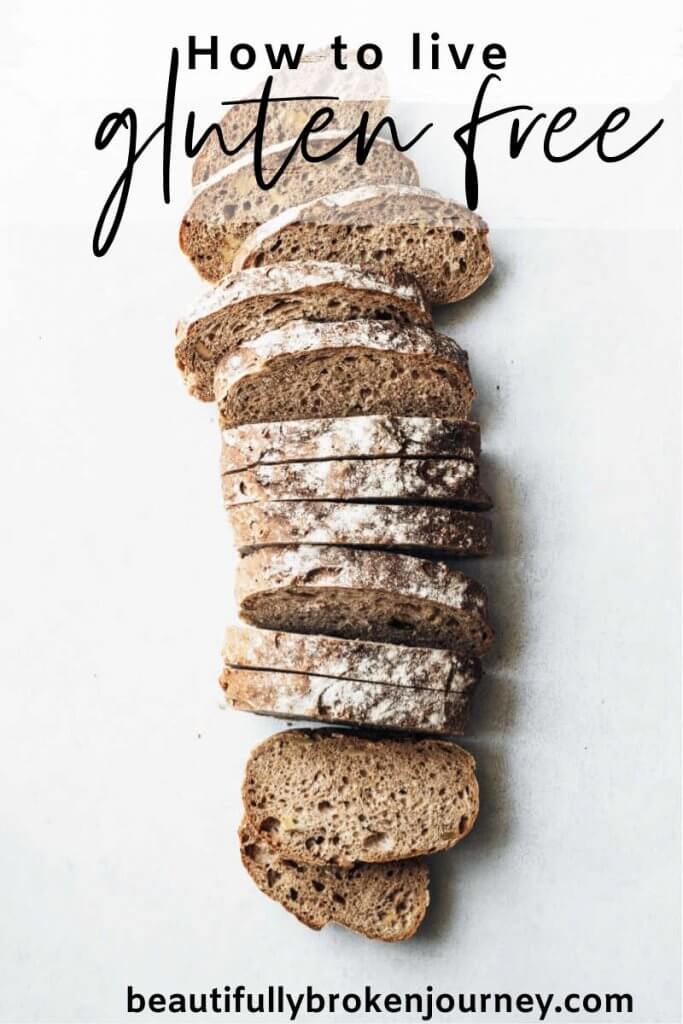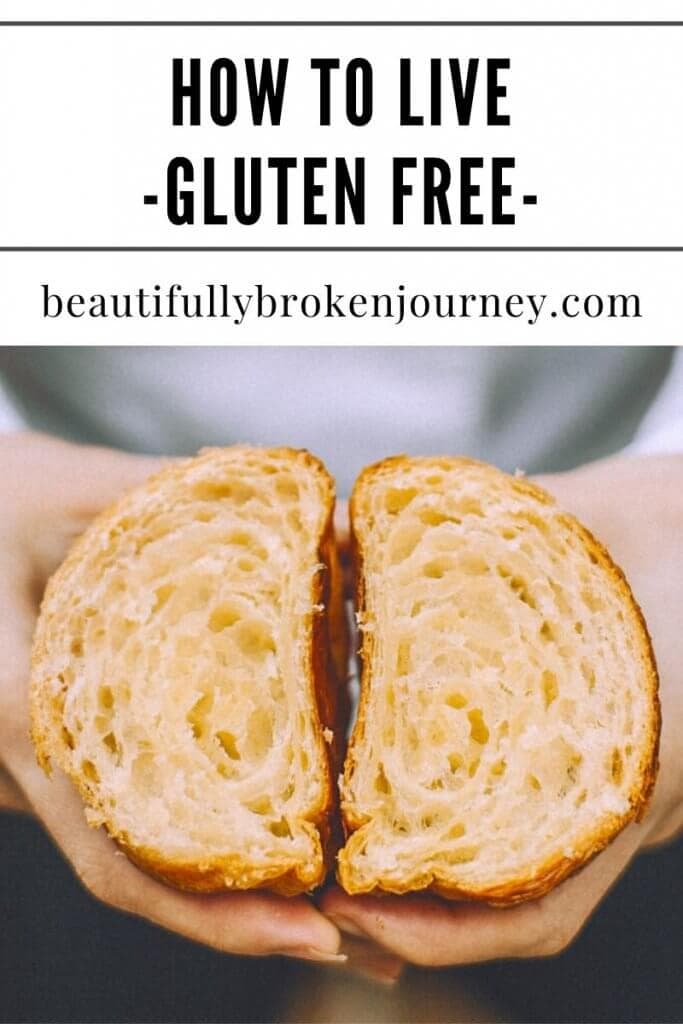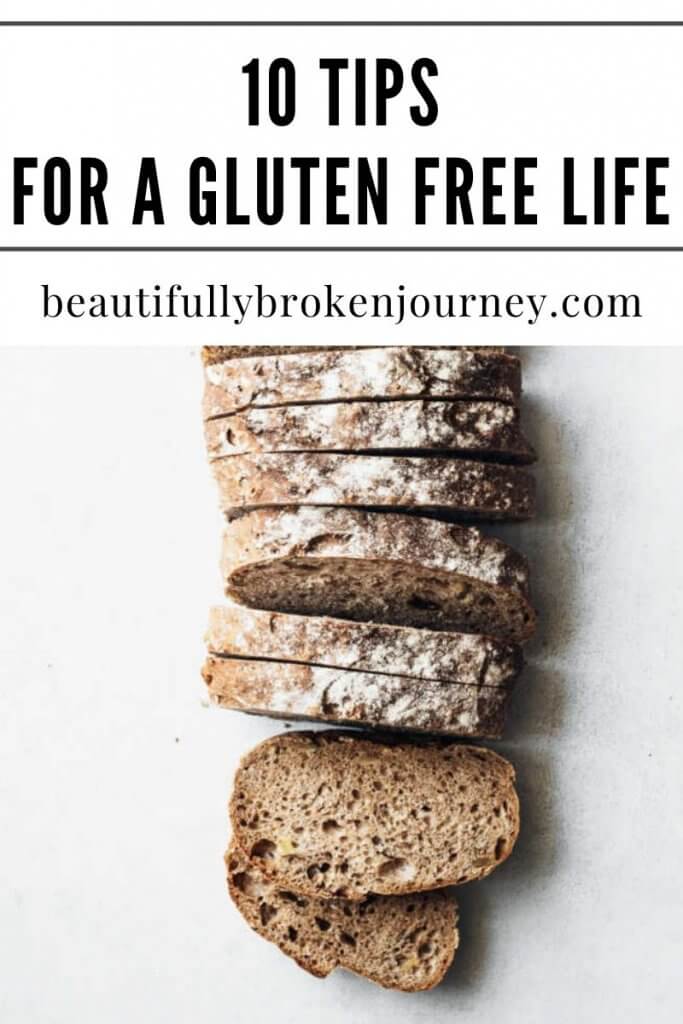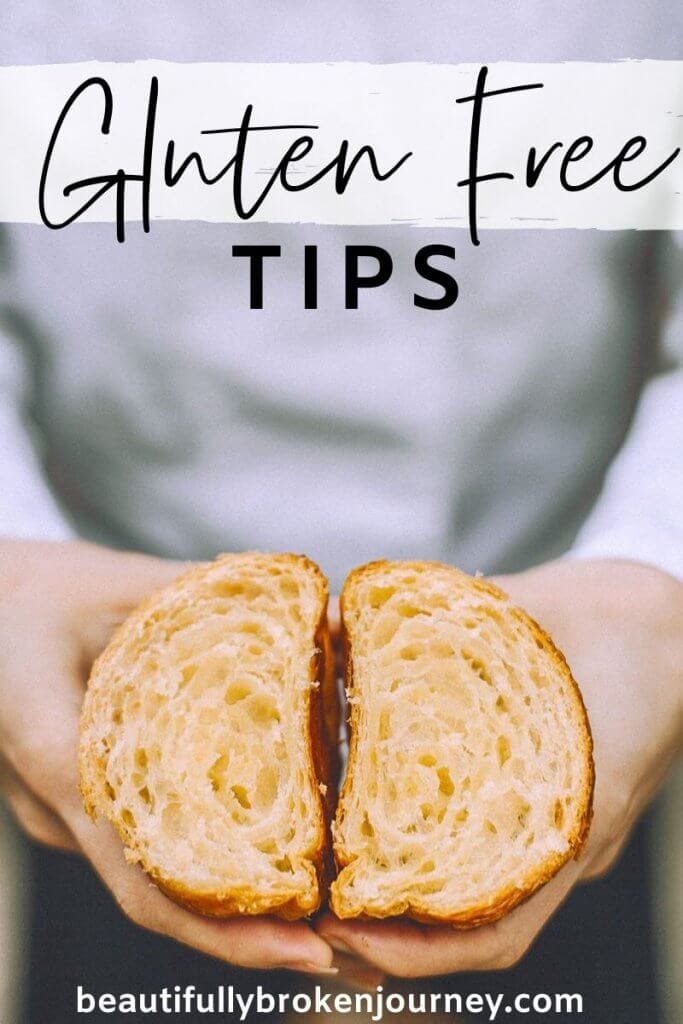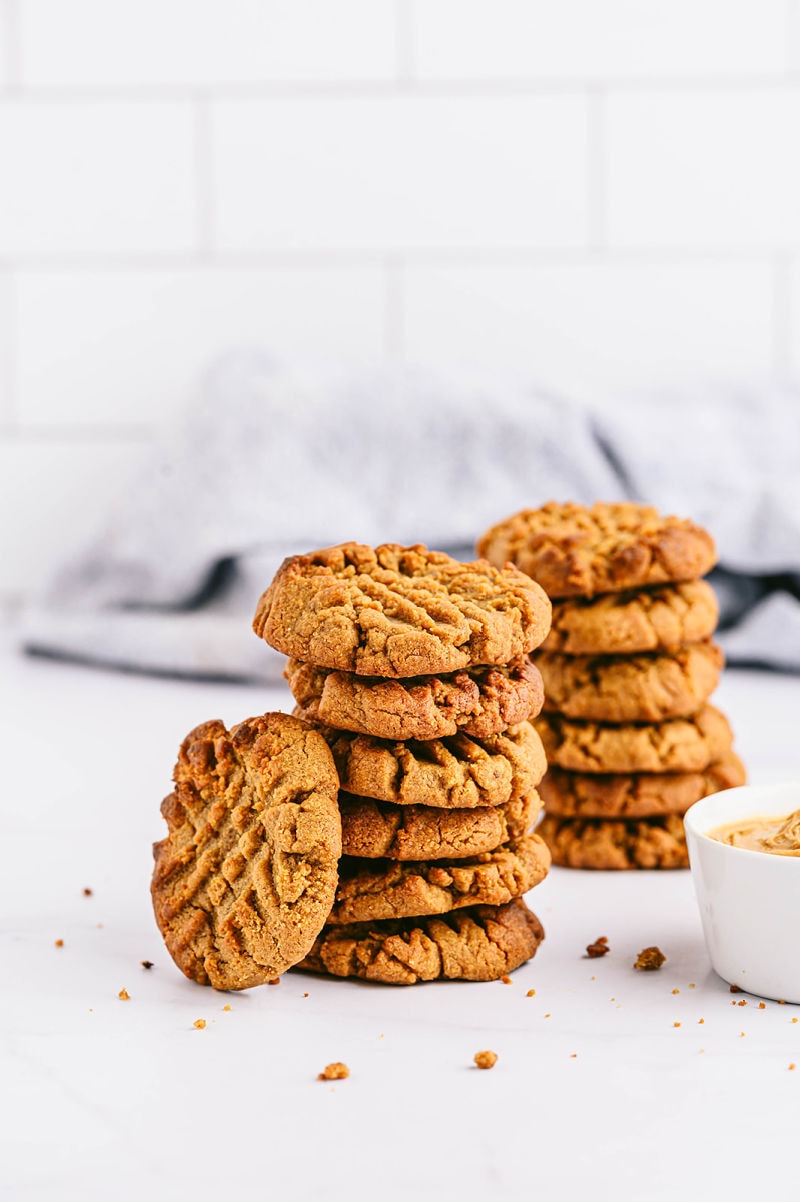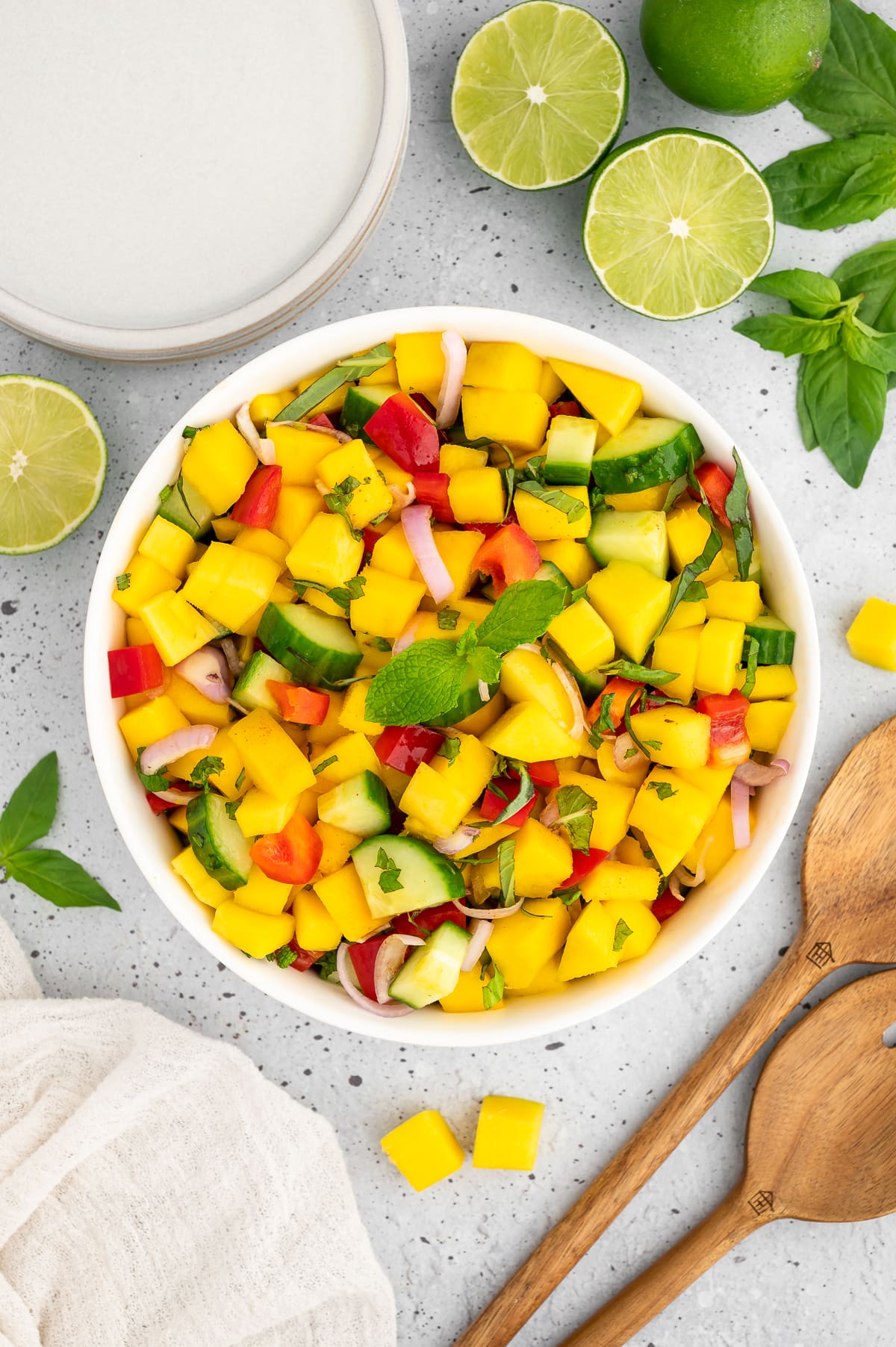Tips for Gluten Free Living
In this post I am not giving medical advice. I am sharing my experience and what has helped me since going gluten free because of my autoimmune disease. Before going gluten free you should consult your doctor to discuss whether or not it would be necessary for your health.
What is gluten?
Gluten is a general name for the proteins found in wheat (wheatberries, durum, emmer, semolina, spelt, farina, farro, graham, KAMUT® khorasan wheat and einkorn), rye, barley and triticale – a cross between wheat and rye.
Gluten helps foods maintain their shape, acting as a glue that holds food together. Gluten can be found in many types of foods, even ones that would not be expected. (source: Celiac Disease Foundation)
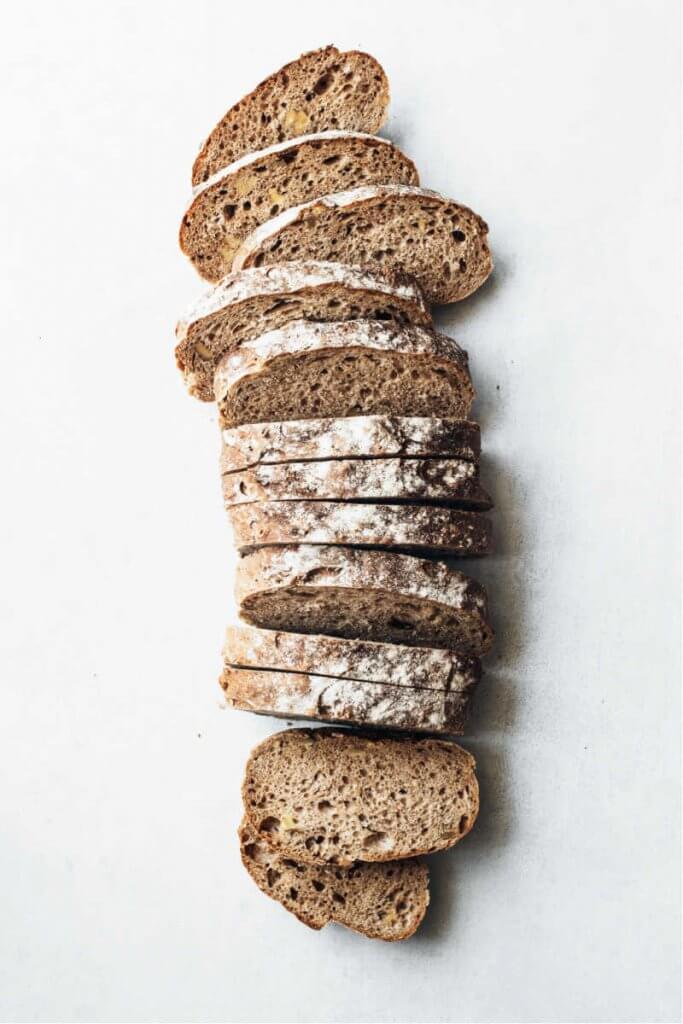
Reasons people follow a gluten free diet?
There are many reasons why some individuals choose to follow a gluten free diet such as
- Celiac Disease- Celiac disease is a serious autoimmune disease that occurs in genetically predisposed people where the ingestion of gluten leads to damage in the small intestine.
- Gluten sensitivity- People with a gluten sensitivity do not have celiac disease, rather they show symptoms of discomfort when ingesting gluten.
- Wheat allergy- medical condition where the person experiences an allergic reaction to wheat and/or gluten.
- Autoimmune disease– some studies suggest that going gluten free can reduce symptoms of certain autoimmune diseases.
Why did I go gluten free?
In November 2019 I was diagnosed with Hashimoto’s. I have had Hypothyroidism since 2008 and upon research and education, I discovered that a gluten free diet could be beneficial for me as a person with thyroid disease.
If you are considering making dietary changes because of a medical condition you should always consult a medical professional prior to doing so.
What does a gluten free diet look like?
When I first went gluten free I was terrified I wouldn’t have anything to eat… I was so wrong! There are wonderful options for gluten free living and eating a less processed diet in general is never a bad idea.
There are many options when choosing gluten free foods such as choosing foods that are naturally gluten free and replacements such as lentil or chickpea noodles, gluten free bread, etc.
Tips for going gluten free
1. Shop the perimeter of the grocery store.
So many wonderful naturally gluten free foods are found in the produce section of the grocery store! They can bulk up your meal and add nutrition to your diet as well.

2. Don’t replace all your favorite gluten foods with gluten free substitutes.
This was one of the first tips my doctors and dietitian gave me. It can be very overwhelming when removing gluten, and the initial response might be to replace all the gluten foods you enjoy with a gluten free option, but those foods are more processed and your body could have a harder time digesting them.
I decided on a few items that I didn’t want to live without and those are the gluten free items I purchase. Those are
- Bread- I have tried so many and my favorite is the Trader Joe’s Gluten Free Whole Grain Bread. I will say, I no longer eat sandwiches. Gluten free bread is not the same for a sandwich so I only eat this bread toasted.
- Crackers- My favorite gluten free crackers are Simple Mills Fine Ground Sea Salt Almond Flour crackers. My kids love these as well and Costco has them usually as well so you can buy them a bit cheaper in bulk.
3. Research restaurants that offer gluten free options.
Eating out can be a bit more stressful to be completely honest. Once you do your research though, it won’t feel as overwhelming. My family knows the places I am able to go so those are our options.
I always recommend looking up the menu online before going or calling to find out if they have gluten free options available. There have been a few times I’ve been out and only had one option on the menu and that wasn’t ideal.
I also always tell my waiter that I am gluten free so they are sure to let the chef know so the food is hopefully not cross contaminated. For me, I don’t have to worry so much about cross contamination because I don’t have celiac, but if you do have celiac you do not want to eat food that has been cross contaminated.
4. Check your alcoholic beverages.
Yes. Even your favorite drink could have gluten. I prefer wine and hard seltzer and those are usually gluten free, but be sure to read the label and make sure it says it’s gluten free.

5. Make a list of go-to meals.
You don’t have to figure new recipes every week, especially at the beginning of your journey. We have go-to meals that are very easy for me to do gluten free and you can expect us to have them at least once a week!
- Tacos- I use corn shells instead of flour and make my own taco seasoning.
- Burgers- I personally don’t use a bun. I’ve yet to find a gluten free bun I can choke down!
- Spaghetti with brown rice, lentil or chickpea noodles.
6. Hire a registered dietitian for help
A dietitian can help you navigate this lifestyle change so much. I am so thankful I had Lindsay O’Reilly to help me with my diagnosis and how to proceed with eliminating the necessary foods to help my body perform better.
When you are looking for an RD I would recommend a non-diet dietitian. Lindsay and I rarely discuss weight, it is all based on how I feel and how my lab results are changing. That’s not to say weight is never a topic of concern with thyroid disease, but it is not our main focus and I am thankful for that.
I did not go gluten free for weight loss, nor did it help me lose any weight to be honest. It was strictly because of my thyroid disease and I do believe that it has helped me. My thyroid antibodies have gone from 414 to under 100 in 8 months… something I’m super proud of! (this is my personal response, I cannot guarantee anyone else will have this response, you need to discuss with your doctor)
7. Read nutrition labels
Gluten is sneaky. It’s found in all kinds of foods so make sure you get comfortable reading nutrition labels. You can find gluten in lots of sauces, seasonings, dressings, soups, etc.
You can also download an app that allows you to scan an item and it will tell you if it has gluten or not which was helpful for me the first few times I shopped while learning the foods I could have.
8. Get creative in the kitchen
There are so many wonderful gluten free recipes! To be honest, I don’t mind eating gluten free because I’ve been able to find foods that are satisfying and recipes my entire family enjoys.
There are so many great bloggers who share gluten free recipes as well. Check out:

9. Have a positive attitude.
Attitude is everything. When I was told going gluten free was highly recommended I allowed myself to have the remainder of the day and be upset about it. I allowed myself to feel frustrated and overwhelmed, but then I told myself the next day I needed to focus on WHY I was choosing this.
Personally, I was dealing with many Hashimoto’s symptoms and needed/wanted relief. I had been given the research that a gluten free diet could help me and I trusted my team of doctors. I chose to think positive and know I was making this choice for my health and that is what has helped me on days that I wish I could eat whatever I want! I am choosing my health and so far, it’s helped me so much so I am thankful.
10. Be patient with yourself
You will not master a gluten free lifestyle the first day, week or month. It takes time to learn and explore what works best for you and your lifestyle.
Be patient with yourself and remind yourself what your reason is for choosing to go gluten free. It’s also helpful if you have a friend who is gluten free to bounce ideas and recipes off of. I’ve found that having some others on the same journey has allowed me to give myself more grace.
Going gluten free is something I never thought I’d do. Ever. I worried that it would send me right back into a diet mentality, but thankfully, it hasn’t.
When you take the focus off the scale and put it on your health, it can make big changes like this feel more doable and lifelong. I’m not gluten free to lose weight, I am gluten free to help my body heal, and thankfully it’s doing exactly that.

